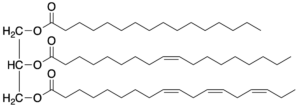Regulatory Considerations Regarding Sunscreen Actives
Yun Shao
Kobo Products, Inc.
June 2024
Summer is here, and it is time to enjoy outdoor activities and the beautiful landscape with friends and family. However, the Sun is bright and scorching, making the weather hot and the use of sunscreen essential. Sunscreen, sunscreen, sunscreen!
When developing sunscreen products, it is crucial to focus not only on performance and aesthetics to meet consumer expectations but also on regulatory compliance. Sunscreen products are regulated worldwide and are classified as drugs by the FDA. For the US market both the manufacturers of sunscreen products and the actives (considered as Active pharmaceutical ingredients (APIs)) used in these products must comply with FDA requirements, including registration and listing, as well as adherence to ICH Q7A Current Good Manufacturing Practices.
In terms of quality control, all sunscreen actives must meet the United States Pharmacopeia (USP) specifications mandated by the FDA in its sunscreen monograph.1 However, there can be some confusion regarding the specific details of these requirements.
National Drug Code (NDC)
The NDC, or National Drug Code, is a unique 10-digit, 3-segment number that serves as a universal product identifier for human drugs in the United States. This code is present on all nonprescription (OTC) and prescription medication packages and inserts in the US. Most formulators know that an NDC is required for a finished sunscreen product. But what about the sunscreen actives used in the formulation?
An NDC is not typically required for an API (Active Pharmaceutical Ingredient) used solely as a raw material in the manufacturing of drug products. However, some sunscreen actives in raw material form are listed in the NDC database due to voluntary actions by their suppliers. This practice is common for suppliers who import sunscreen actives into the US to facilitate customs clearance.
USP specification
To ensure compliance, a sunscreen active must be tested against its USP monograph and complies with all specifications. This testing is straightforward for organic sunscreen actives because they are often supplied as pure compounds. You can take a sample, follow the USP test methods, and conduct the tests. However, it is more complicated for inorganic UV filters such as titanium dioxide (TiO2) and zinc oxide (ZnO).
Most commercial grades of TiO2 and ZnO used in sunscreen applications have exceedingly small particle sizes and large surface areas. Consequently, they are highly photoactive and can catalyze the oxidation of organic compounds in sunscreen formulations or potentially molecules in the stratum corneum. To mitigate this, especially for TiO2, surface treatment with inorganic compounds like alumina and/or silica, and organic compounds such as stearic acid or silicones, is common.
As a result, the commercial TiO2/ZnO powders available to formulators are always a mixture of the active compound and the coating materials. The actives cannot be separated from the coating materials, and the powder, if tested as is, cannot meet USP specifications. USP verification or certification can only be performed by the manufacturer, as they have access to the actives prior to the surface treatment. It is common to see a statement in the Certificate of Analysis (CofA) indicating that the active prior to surface treatment is USP grade, or a separate section in the CofA showing the test results of the active prior to surface treatment.
Due to their large surface area, both attenuation grade TiO2/ZnO have much moisture absorbed on their surfaces. In the USP specifications for TiO2, the loss on ignition is set to be less than 13% for the attenuated grade (micronized or nano) TiO2. However, for ZnO, the specification for loss on ignition is less than 1%. There is no provision for micronized or nano zinc oxide. Therefore, to meet these specifications, the powder needs to be dried before the loss on ignition test.
Zinc Oxide Type
There are three USP monographs related ZnO:
- Zinc Oxide
- Zinc Oxide Neutral
- Zinc Oxide Powder
These monographs specify different purity requirements, with Zinc Oxide having the most stringent criteria. Only USP Zinc Oxide is listed in the FDA sunscreen monograph.1 While the Zinc Oxide Neutral monograph mentions labeling it for use in sunscreen, its purity level is too low for this purpose. Zinc Oxide Powder also has different, typically lower, purity requirements compared to USP Zinc Oxide. Therefore, it is important to use USP Zinc Oxide for sunscreen formulations to meet FDA standards.
Assaying The Actives
When assaying active ingredients in sunscreen formulations, the method chosen should align with the assay’s purpose. If the goal is to certify compliance of a RM with the United States Pharmacopeia (USP), a USP method must be adopted. However, once an active ingredient is incorporated into a sunscreen formulation or undergoes surface treatment (as is the case with TiO2 and ZnO), the mixture is no longer considered a USP active. In such cases, the purpose of the assay is to analyze the active ingredient level, not its USP compliance. Therefore, any effective and validated analytical method can be used.
Organic sunscreen actives are often assayed using gas chromatography. The USP method can also be applied to assaying the raw material (RM) as well as the sunscreen composition. For inorganic UV filters, various methods can be used for assaying the treated powder or finished sunscreen products. These methods include X-ray Fluorescence (XRF), titration, Atomic Absorption Spectroscopy (AAS), Ion Chromatography (IC), and Inductively Coupled Plasma Mass Spectrometry (ICP-MS).
All except the titration method offer high sensitivity and are originally designed for trace metal analysis. Each method has specific pitfalls related to interferences, sample preparation, and operational complexity. It is crucial to fully validate the selected method for each type of sample. Subsequently, managing the analytical workload can be a significant challenge for companies with diverse sunscreen product lines. Each sunscreen formulation may require a specific test protocol and validation to eradicate or minimize the potential matrix effect of different formulations on the test result. Therefore, it is necessary for companies to have a well-organized and efficient analytical testing process to ensure compliance with regulations and maintain product quality across their range of sunscreen products.
Active vs. Non-active TiO2
The distinction between active and non-active TiO2 can be particularly confusing in color cosmetics with SPF, where both pigmentary and attenuation-grade TiO2 are utilized. While assaying and reporting the total TiO2 content is straightforward, the level can fluctuate among different shades, especially when the range of shades is very wide. This variability makes it challenging to determine the suitable active level for labeling purposes.
To address this issue, there is a practice to report only the level of attenuation-grade TiO2 content. However, this approach can also be complex, as it requires assaying the intermediate product in the production process. This datapoint is then used in the calculation of the final active content, adding to the intricacy of the process.
Environmental Concern
As we all know, the use of oxybenzone and octinoxate in sunscreens has been banned in Hawaii, Key West in Florida, Palau, the U.S. Virgin Islands, Aruba, Bonaire, and Mexico due to their toxicity towards coral reefs. This has reduced the number of sunscreen actives available for formulation in sunscreen products in the US. As a result, the use of TiO2 and especially ZnO has dramatically increased.
It is interesting to note that ZnO is considered aqua toxic by the EPA and ECHA. According to DOT regulations, a pictogram indicating this aqua toxicity must be included in the SDS and on the shipping label. Nonetheless, studies have shown that the level of ZnO introduced into seawater from sunscreen use by consumers is extremely low. 2 It is well below the Predicted No Effect Concentration of Zn2+ and Most Sensitive Observed Effect Levels. 3,4 Therefore, the use of zinc oxide as a sunscreen active is considered safe for marine species and ZnO sunscreen can be claimed as reef safe.
On the other hand, TiO2 is insoluble in water and has no toxicity towards any species. Its safety towards coral reefs was suggested by Corinaldesi in comparison to ZnO. 3 Of course, nano TiO2 is photo-catalytical under UV exposure if uncoated. However, with proper coating, the photocatalytic activity is suppressed, making TiO2 environmentally friendly. It could be the best sunscreen active from an environmental perspective.
However, TiO2 has a higher refractive index and often leaves a white cast on the skin if not formulated properly, which presents a significant challenge to formulators. Despite its environmental advantages, it has not been as widely considered for sunscreen formulations as zinc oxide in recent years.
In conclusion, navigating the regulatory landscape and environmental considerations for sunscreen actives is complex. Manufacturers must balance regulatory compliance, environmental safety, and formulation challenges to develop effective and safe sunscreen products.
References:
- Federal Register / Vol. 64, No. 98 / Friday, May 21, 1999 /Rules and Regulations: Sunscreen Drug Products For Over–The-Counter Human Use; Final Monograph.
- Antonio Tovar-Sa´nchezet al., Sunscreen Products as Emerging Pollutants to Coastal Waters, PLOS ONE, June 2013, Volume 8, Issue 6, e65451.
- C Corinaldesi, Impact of inorganic UV filters contained in sunscreen products on tropical stony corals (Acropora spp.), Sci Total Enviro., 2018 Oct 1:637-638:1279-1285.
- Ingo B. Miller, Toxic effects of UV filters from sunscreens on coral reef revisited: regulatory aspects for “reef safe” products, Environ Sci Eur (2021) 33:74.
- Andreas P. Gondikas et al., Release of TiO2 Nanoparticles from Sunscreens into Surface Waters: A One-Year Survey at the Old Danube Recreational Lake; Sci. Technol.2014, 48, 10, 5415–5422.
ABOUT THE AUTHOR
 Dr. Yun Shao joined Kobo Products Inc. in 1996 and currently serves as the Senior Vice President of R&D. With over 20 years of experience, he is a seasoned expert in inorganic sunscreen technology, micro TiO2 and ZnO development, pigment surface treatment, dispersion technology, specialty cosmetic ingredients, color cosmetics, and global cosmetic ingredient regulations.
Dr. Yun Shao joined Kobo Products Inc. in 1996 and currently serves as the Senior Vice President of R&D. With over 20 years of experience, he is a seasoned expert in inorganic sunscreen technology, micro TiO2 and ZnO development, pigment surface treatment, dispersion technology, specialty cosmetic ingredients, color cosmetics, and global cosmetic ingredient regulations.
Dr. Shao has shared his work at prestigious scientific meetings, including the IFSCC Congress, SCC Annual Scientific Meeting, and FLSCC Sunscreen Symposium. He holds nine patents and has co-authored several book chapters and technical papers on surface treatment and inorganic sunscreen formulations.
Dr. Shao earned his Ph.D. in Polymer Chemistry from Rensselaer Polytechnic Institute and his B.S. in Applied Chemistry from the University of Science and Technology of China. He is a member of the Society of Cosmetic Chemists and a founding member of the Chinese American Cosmetic Professional Association.



 Giorgio Dell’Acqua is passionate about the environment and sustainability. He has given many lectures in the past on sustainable supply chain, natural ingredients and upcycling as well as publishing several articles for the industry on this topic (see below for references). Giorgio is currently Chief Science Officer at Nutrafol, a company specialized in natural based supplements and topicals for healthy hair and scalp. After obtaining his PhD in Cell Biology in 1989, Giorgio worked in Academia for 15 years as an investigator in applied medical research. Moving to the private sector in 2000, he has spent the last 20+ years as an executive and cosmetic scientist in the personal care industry. During his career, he directed R&D, Innovation, Science, and Product Development at multiple companies. He has helped bring 200+ successful active ingredients and finished products to market, has authored more than 90 publications in medicine and cosmetic science, and he holds 2 patents. Giorgio is also on the executive board of the US Society of Cosmetic Chemists (SCC) as its 2024 secretary, he is the chair for the NYSCC outreach committee and he is a member of the NYSCC Scientific Committee.
Giorgio Dell’Acqua is passionate about the environment and sustainability. He has given many lectures in the past on sustainable supply chain, natural ingredients and upcycling as well as publishing several articles for the industry on this topic (see below for references). Giorgio is currently Chief Science Officer at Nutrafol, a company specialized in natural based supplements and topicals for healthy hair and scalp. After obtaining his PhD in Cell Biology in 1989, Giorgio worked in Academia for 15 years as an investigator in applied medical research. Moving to the private sector in 2000, he has spent the last 20+ years as an executive and cosmetic scientist in the personal care industry. During his career, he directed R&D, Innovation, Science, and Product Development at multiple companies. He has helped bring 200+ successful active ingredients and finished products to market, has authored more than 90 publications in medicine and cosmetic science, and he holds 2 patents. Giorgio is also on the executive board of the US Society of Cosmetic Chemists (SCC) as its 2024 secretary, he is the chair for the NYSCC outreach committee and he is a member of the NYSCC Scientific Committee. Michael Anthonavage serves as the VP of Innovation at Vitaquest International, dedicated to expanding the supplement market footprint and ensuring their customers gain a competitive edge. With expertise in bringing new technologies to market, championing innovation and growth for all areas of health and nutrition as well as many aspects of skin and haircare product development. Michael is a seasoned skin biologist, research scientist, educator, and a member of the scientific advisory board for the New York Society of Cosmetic Chemists for the past 5 years.
Michael Anthonavage serves as the VP of Innovation at Vitaquest International, dedicated to expanding the supplement market footprint and ensuring their customers gain a competitive edge. With expertise in bringing new technologies to market, championing innovation and growth for all areas of health and nutrition as well as many aspects of skin and haircare product development. Michael is a seasoned skin biologist, research scientist, educator, and a member of the scientific advisory board for the New York Society of Cosmetic Chemists for the past 5 years.
 About the Author
About the Author

